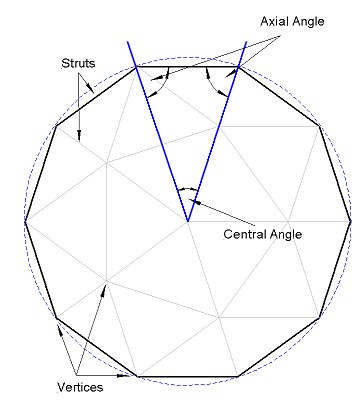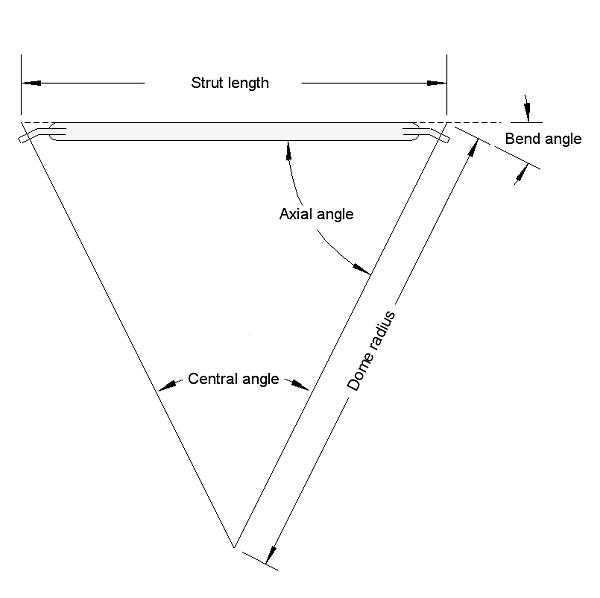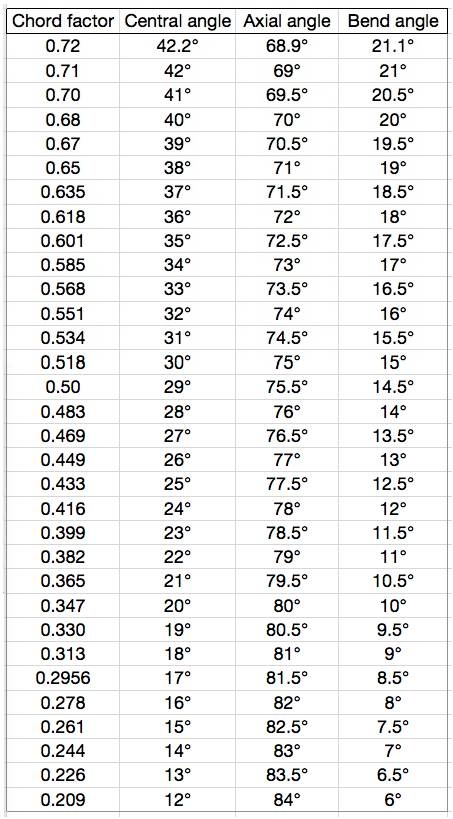
Tweet
| Navigation |
| Home |
| Site map |
| Articles |
| Contact |
| Links |
| Forum |



Flattened Conduit bend angle calculatorIf you are building a conduit dome you need only two measurements, one is the chord factors which tell you how many different length struts there are and how long they should be, the other is the angle that you bend the ends of the flattened tube to. There are loads of dome calculators that will tell you chord factors but not many will tell you what the bend is on each strut end. This article will explain how to calculate this angle for any frequency dome all you need are the strut length and the radius of the dome you are building. First lets take a look at what angle we need to know and what it is called, the diagram below shows a section through a 2v dome, if we draw a line to each end of a strut from the centre of the geodesic sphere we produce a triangle, the central angle is the angle from the center of the dome that goes out to each end of a strut, the axial angle is the angle that these two lines form at the end of each strut, this is the angle which we are interested in.  Calculating this angle is simple, but first we need to do a quick calculation, I can draw up a table to show the axial angle for all the different strut lengths but I donít want to draw up loads of tables for different size domes so we will divide the strut length by the radius of the dome, this will give us the relative strut length for a dome radius of 1. This is also known as the chord factor, if you are using an online calculator put 1 in the radius box, if you want more accuracy just add some naughts like 100, It doesnít matter if you are using metric or imperial measurements 100 inches would work just as well.  The table below shows the bend angle for each equivalent chord factor, select the nearest match to the chord factor and read across to the corresponding bend angles, results are every half degree.  |
|
 |
|
| [ comments 0 ] |
comments will be accessed through the forum in the new site design (coming soon)
11039